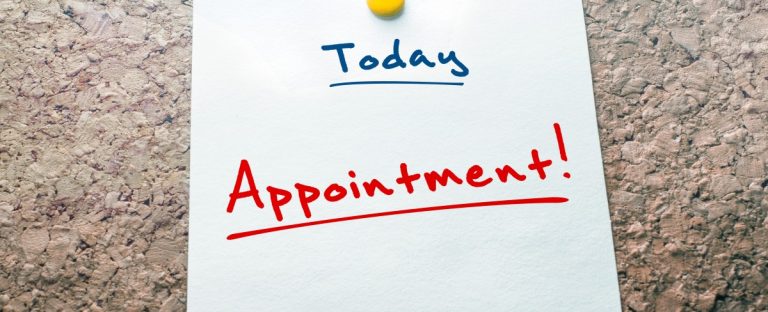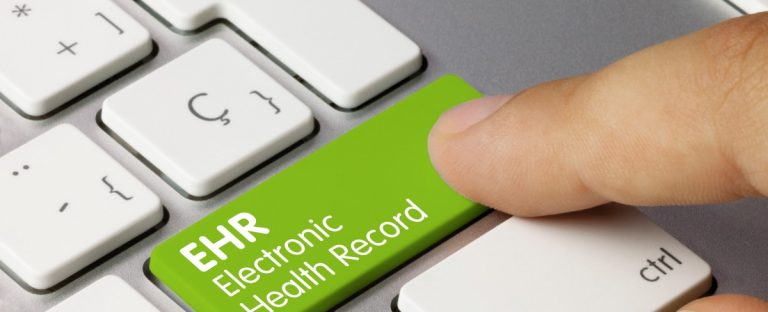Your holistic practice exists to deliver quality care to your patients—and somebody has to pay for that quality care. Your patients might not exactly know their role or responsibility in paying for the services rendered—for example, there could be assumptions about insurance coverage that doesn’t apply to your holistic practice—which can lead to friction later down the line.
That’s where a patient financial agreement can help your holistic practice improve the patient-payer-practice relationship and start the conversation about patient responsibility! Keep reading to learn more.
What Is Involved in a Patient Financial Agreement?
A patient financial agreement can contain a multitude of components depending on how extensive your practice’s policies are and what best suits your patients. For example, if any of your clients pay by check, then you’ll want to outline if there are any special fees or steps in the event a check has trouble processing.
For the most part, your holistic practice will want to include the following core components when drafting your patient financial agreement:
Be Clear About Insurance/Medicare Coverage
The chances are that your holistic practice doesn’t provide healthcare that is covered by insurance—and while there are important legislative initiatives that would expand Medicare’s coverage of holistic treatments, such rulings are not in place as of yet.
Make sure you clearly explain if your practice doesn’t take any insurance coverage or provide details if you do happen to be contracted with a third-party payer. While your patients should ideally be informed of what their insurance coverage includes, many of them might have a blind spot when it comes to coverage for holistic treatments.
Clarify the Patient Is Responsible as the Payer
Since your practice likely doesn’t take insurance, make sure it’s clear on the financial agreement that your patient is responsible for the financial aspect of services rendered. In the case that you do accept insurance, remind the patient that they’re responsible for paying their deductible before coverage starts. The patient is also responsible for any unpaid balances.
Clarifying the patient’s financial role in your holistic practice can contribute to patient engagement and help them realize what responsibility they have in their relationship with your holistic practice.
Outline Payment Options
Does your practice take cash only? Credit cards? Venmo? Briefly state what options your patients have for paying their balance, whether that’s at the time of checking in, checking out, or via an online payment portal.
Encourage Questions
Seeing the words FINANCIAL AGREEMENT might be intimidating to patients and seem like a formal legal document; while you don’t want to minimize the importance of the patient understanding their financial responsibility, you also don’t want to keep the process opaque.
Encourage questions both when you hand the agreement to your patient and consider adding a point of asking questions in the preface of the agreement. Keeping the lines of patient communication open can help your practice fortify the patient-practice relationship and boost patient engagement, which is always a good thing.
Why Is a Patient Financial Agreement Helpful To Your Holistic Practice?

While your patients no doubt understand that they need to pay for the care your holistic practice provides them, there might be some confusion about how that happens. Especially for new patients, a patient financial agreement can simply function to clarify or reiterate your practice’s policies, any potential fees for no-show appointments or bounced checks, and if your practice has any relationships with insurance providers or Medicare.
The patient financial agreement is also a great prompt for your patients to ask any questions about paying for your services. Starting this conversation can further build rapport and trust with your patients, which is crucial for patient engagement and patient satisfaction!
Patient Financial Agreement Template
Your holistic practice’s patient financial agreement can take whatever form you wish; it might be shorter or longer depending on how in-depth you want to be on your agreement. You might include your practice’s mission statement or other branding or contact information in the header, which can also take up space.
The following template is simply an example of what you could include; tailor it to best suit your holistic practice’s needs!
Thank you for choosing [Name of holistic practice] for your holistic wellness needs. We’re committed to providing you with quality care. We ask all clients to review and sign this policy, asking questions as necessary. A copy will be provided to each client upon request.
- Patient payment: The patient is responsible for payment at the time of service unless XYZ [if applicable].
- Payment methods: Explain if you take credit card payments, cash, checks, etc. Include any relevant fees that might incur if payment doesn’t go through, such as a service fee for bounced checks, etc.
- Proof of payment and photo ID required: Some practices might want to keep a photocopy of the patient’s ID on file
- No-show fees: Outline your practice’s no-show policy here
- Insurance/Medicare Programs: Some holistic practices and their specialties are accepted by third-party payers; outline those guidelines here or explain that you don’t accept any insurance or CMS patients. In this latter case, reiterate that the patient is responsible for payment.
I have read the above financial policies and agree to follow [Name of holistic practice’s] policies and I acknowledge my financial responsibility for services rendered.
Patient Name
Patient Signature
Date
Spend More Time with Patients by Partnering with Holistic Billing Services!
The overall healthcare revenue cycle can be incredibly complex and lead to a lot of stress. If your holistic practice wants to spend less time dealing with medical coding, billing, and trying to keep up with new regulations, then partner with Holistic Billing Services and spend more time on what matters most: your patients!
Our experts have decades of experience and expertise in your specialty. We’re eager to help you succeed!
Your holistic practice’s success and longevity within your community are predicated upon a streamlined healthcare revenue cycle—part of that comes from understanding a couple of key financial metrics that you can use to evaluate your practice’s current performance! Being able to calculate and track the financial key performance indicators, known as KPIs, of your holistic practice means that you’ll be able to make changes where needed and be better informed of your business’s status.
Two key metrics to track are the gross collection ratio (GCR) and the net collection ratio (NCR); these might sound the same, but they track different aspects of your practice. Both are valuable for you to know and measure because they help fill in the picture of your practice’s financial health!
Keep reading to learn the difference between gross and net collection ratios, plus how to calculate them for yourself.
What Is Your Gross Collection Ratio?
Let’s start with the GCR: the gross collection ratio refers to your practice’s gross income or gross profit; this is the most simple measure of your practice’s profitability. This metric includes the direct cost of producing or providing goods and services but doesn’t include the costs related to running your practice like administrative expenses, taxes, and other potential expenses.
An important note regarding the gross collection ratio is that it doesn’t deduct write-offs, so it’s considered to be a less effective measure of the financial performance of your holistic practice compared to the net collection ratio. Without removing write-offs, refunds, and contractual or non-contractual amounts from the math, you can’t get a comprehensive insight into your practice’s income.
What Is Your Net Collection Ratio?
On the other hand, your practice’s net collection ratio is an essential metric that measures how effectively your practice is at collecting all legitimate forms of revenue. This rate indicates inefficiencies in the process; for example, if a practice is struggling to collect payment due to bad debt, late filings, coding inaccuracies, claim underpayments or some other type of revenue issue, then it will have a low net collection rate.
The ideal net collection rate to strive for is 90% or above since that reflects your practice is collecting on all forms of revenue that it should be; great! However, if you find that your holistic practice’s NCR is below 90% then it might be wise to perform an internal audit of your billing practices.
Why Are These Financial KPIs Important?

These financial KPIs are important to your holistic practice’s success because they both provide visibility into how your practice is actually performing in relation to how it should be performing after factoring in any refunds, write-offs, or contractual and non-contractual amounts.
You can’t know what to improve about your practice’s financial standing if you’re not sure how well you’re doing in the first place; knowledge is power, after all! Streamlining your net collection rate can reveal areas within your medical billing and coding processes that might need some more attention and therefore result in an improved overall healthcare revenue cycle that benefits your practice.
How to Calculate Your GCR
Let’s take a look at how to actually calculate your practice’s gross collection ratio; the GCR formula looks like this:
Gross Collection Rate = Total Payments / Charges *100% (for a specific time period)
The gross collection rate only shows what your practice is allowed to collect. For example, you may have charged $200 but you only collected $175 from your insurance payer due to the agreement or contract that you might have signed.
Following this logic, the $175 is below the gross rate.
How to Calculate Your NCR
Since the net collection rate is one of the most important financial metrics to track for your holistic practice, it’s important that you calculate it with frequency—typically about once a quarter is a good measure of your practice’s financial performance.
A low NCR should be seen as an urgent priority since that directly affects the financial standing of your business. Optimizing your net collection rate starts with understanding how to assess your net collection rate. Calculating the net collection rate involves several important steps:
- Identify the time period that you want to monitor (e.g., 90 or 120 days). Assess data from an earlier period in which the majority of claims would be closed and cleared; ~6 months back is advisable.
- Calculate total payments (from payers and patients) for the designated time period.
- Calculate total charges minus approved write-offs (e.g., due to contractual reasons, bad debt, professional courtesy discounts, etc.) for the designated time period.
- Divide your calculation in step 2 by your calculation in step 3. Then multiply by 100.
In the end, the formula looks something like this:
Net Collection Rate = (Payments / (Charges – Contractual Adjustments)) * 100%
Do this consistently (e.g., every 90 days) for a period of at least one year to get the most accurate average rate.
Once you determine how your baseline collection rate stacks up to that goal, use information from the holistic industry to compare it to industry averages. From there, set a collections metric objective based on how much you would like to see it go up and how this could affect your revenue stream.
Let Holistic Billing Services Handle Your Healthcare Revenue Cycle!
If your holistic practice is overwhelmed by the billing and coding processes, then turn to the experts at Holistic Billing Services to handle your healthcare revenue cycle! Our experts have experience in your specialty and we’re eager to help you thrive. Medical billing and coding is a complicated process that seems to change all the time with new regulations—let our team take that stress out of your daily workflow so you can focus on what matters most: delivering great care to your patients.
No-show patients can be costly to your practice in terms of both impacting your overall healthcare revenue cycle and productivity. When patients schedule appointments, that blocks out the time from another client booking that slot—so when nobody shows up for the time slot, you and your practitioners are left to fill the time how you each see fit.
Your holistic practice is there to deliver great care to the people in your community, so when patients don’t show up for their appointments and haven’t made any contact to let you know what’s going on with their schedule, it can be frustrating and costly.
If you find that your holistic practice is constantly dealing with no-show patients that affect your revenue stream and daily workflows, then try some of these tips below to help mitigate these unexpected absences.
Should Your Holistic Practice Have a Policy for No-Show Patients In Place?
The short answer: yes, definitely! No-show policies help you outline what constitutes a no-show patient, what options a no-show patient has to reschedule or cancel, and what consequences there are for repeat offenders.
Simply putting these components together into a document that is made available to patients, whether new or returning, can help your clients understand their role in keeping their appointment. Disseminating an email, having a notice on your website or scheduling software, and having a brief conversation over the phone, when relevant, clarifies what will happen if a patient misses their time slot; if patients don’t know that they have options to adjust their time slot, then they might be a no-show because they’re unaware!
A no-show policy doesn’t have to be an extensive document, but it should contain a few core parts that illustrate what your practice designates as a no-show patient and how the patient can proceed if they need to reschedule or cancel their appointment.
Consider adding these sections:
- Briefly describe what is a no-show patient and how this differs from a patient who calls to cancel
- Establish fees for canceling or incentivize patients to keep their appointments with your practice
- Explain how patients can take control of their time slot by rescheduling or canceling their appointment altogether instead of simply not showing up
- Outline what might happen if a patient is consistently making and not keeping their appointments; for example, if a patient is a no-show to more than 3 appointments, then they need to call your practice to schedule an appointment instead of using an online booking system
Determining a no-show policy for your holistic practice can save you a lot of headaches and better inform your patients of their options and responsibilities.
How Much Are No-Show Patients Actually Costing Your Holistic Practice?

Let’s break down how much no-show appointments are actually costing your holistic practice.
For example, if each appointment brings in about $100 and you’re having a no-show once a day, then the math looks like this:
$100/day x 5 days a week = $500/week in lost revenue
Of course, substitute in the frequency and actual revenue per appointment that pertains to your holistic practice; regardless, no-shows are definitely costing you.
Going back to the example above, over the course of a year, your holistic practice is losing around $25,000. That’s a significant amount of revenue and that’s why addressing no-shows—with the help of a policy and a few tips below—is important to the financial success of your practice.
Maximize Productivity and Minimize No-Show Patients with These 3 Tips
You can help keep the wheels of your holistic practice running smoothly with these tips to maximize productivity and minimize no-show patients:
Open the Lines of Communication with Your Patients
Life happens, of course, so it’s not uncommon for your practice to have no-show patients. But having a conversation with them about why they missed their appointment can be a strong indicator of how your practice can help them in the future!
For example, if a patient says that they didn’t show up to the appointment and it’s because they didn’t have a convenient way of rescheduling on their own then that might lead to you considering implementing or changing scheduling systems. If a patient is only able to make or change their appointment via the phone with you, then that’s not going to be ample enough for people who might not have the time to call.
Alternatively, if a patient says that they simply forgot they had a slot booked with you, then that might mean you consider establishing or beefing up a reminder system for your patients. Automated software that texts, calls, or emails patients regarding their appointment times at a designated time can help keep your practice top of mind for them.
Offer Walk-In Slots
If your holistic practice is in a busy part of town that gets a lot of foot traffic, then consider implementing a walk-in availability schedule. Sticking a sign on the sidewalk or having a post in the window can inform people interested in holistic treatments that you’re available and keep your workflow going. This can help keep revenue flowing when appointments are no-shows and gives you the opportunity to attract new patients!
Directly Call Patients Who Tend to No-Show
An automated reminder system will likely help the majority of your patients remember and confirm their appointment with your holistic practice, but if you notice that a handful of patients seem to be late or are frequently forgetting their appointments, then a personal touch might make all the difference.
It’s one thing to see a message or get an automated call to remind the patient of their slot, it’s another thing to directly hear from you about it. Adding that personal touch to your patients’ experience reflects favorably and demonstrates how much you care about delivering a great experience.
Streamline Your Operations with Holistic Billing Services!
Your patients are your top priority—but if you find yourself swamped with mountains of medical coding and billing paperwork, rejected claims, and a neverending headache from trying to keep up with new regulations, then it might be time to partner with a medical billing firm!
The experts here at Holistic Billing Services have experience in your specialty and we’re eager to help your practice succeed so you can focus on what matters most: your patients.
No matter the specialty of your holistic practice—whether you offer acupuncture, massage therapy, chiropractic treatments, or a combination—you’re there to provide quality care to your community. How do you know that you’re squarely hitting that target, though? What if there are some areas of your holistic practice that patients wish were a little more streamlined for them? That’s where a patient satisfaction survey helps facilitate effective patient communication.
Patient satisfaction surveys are a great way to get feedback on the perception your patients have regarding your overall holistic practice experience. Encouraging their feedback can lead to a stronger patient-practice relationship and optimize your overall practice to best suit the patient experience.
Why Is Patient Satisfaction Important for Your Holistic Practice?
The success of your holistic practice depends upon patients having a great experience, ideally from start to finish. Your patients, both new and returning, are the heart of your practice since they dictate the financial performance and are there to receive quality care from your organization. A negative experience, or repeated pattern of not addressing patient feedback, can lead to loss of business.
Implementing a patient satisfaction survey can help your holistic practice prioritize the feedback of your patients beyond delivering great care: simply initiating the conversation and asking for their feedback and taking steps to apply that feedback demonstrates great care for the relationship. A strong patient-practice relationship behooves you and your practice’s enduring success!

How to Write a Patient Satisfaction Survey
Writing a patient satisfaction survey for your holistic practice’s patients doesn’t have to take a long time—nor is it meant to be unchanging! It’s completely fine if you start with a few anchor points to ask them about but later pivot to ask about something else pertaining to your practice.
Start with these foundational steps to put together some questions that you feel best to apply to your patient population:
Reflect Upon What Might Need Improvement
Internally brainstorm for ideas regarding what might apply to your patients; is there a problem with the scheduling system? Do you often have issues with designating parking spots for your practice? Are you seeing patients return to your practice or do they visit once or twice but move to another organization? Jot down your practice’s internal points of interest to consider including on the patient satisfaction survey.
Listen to Your Patients
Some patients might be telling you what they think about your practice without having the official survey in front of them—picking up on what they discuss when making small talk can help give you insight into what is inconvenient to them or what they’d like to see more of.
For example, if you hear your patients ask if they’re okay to park in front of the business next door, then that might be a clue into what your holistic practice needs to address in your patient satisfaction survey. Picking up on these informal comments that share a theme or pattern is a great way to scope out what to include in your survey.
Determine Your Rating Scale
Your survey results won’t be as actionable as you’d like if your rating scales are inconsistent; your survey needs a measurable way to compare data to make it effective! There are many different ways to scale your patient satisfaction survey, but keep these points in mind when determining which to implement in yours:
- Try to avoid offering a “neutral” option since that won’t help your holistic practice yield specific results
- Stick to one rating scale method for all quantitative questions; for example, utilizing a variety of emoticons or a numbered scale for the survey will help keep your results comparable
Questions to Consider Using for Patient Satisfaction Surveys
If you’re ready to write your holistic practice’s patient satisfaction survey, consider including some of these questions to jumpstart discussion and select the best range that suits your patient population:
- How long did you wait for your appointment to start (beyond your appointment time)?
- How clean was the waiting room?
- How knowledgeable were the staff?
- Was the staff courteous?
- Were you informed of the payment options available to you?
- Are our appointment times convenient?
- How would you rate the parking availability of this office?
- Did the practitioner meet your needs?
- Did you feel you were treated as a top priority in this office?
- Will you return to this practice?
- Would you refer your friends and family to this practice?
You’ll notice that none of these questions are double-barreled—or, in other words, asking about two separate things in the same question. For example, asking if the patient will return to your practice is different from asking if they would refer their friends and family to your practice.
Be sure to also include some open-ended questions for your patients to share their free-form opinion and ideas for improvement. For example, ask the question “What can we do to improve your experience?” to demonstrate your holistic practice’s eagerness to hear from the patient directly about what can be streamlined for their experience.
Focus on Your Patients and Let Holistic Billing Services Handle Your Medical Billing!
The shaping of your holistic practice’s reputation is happening whether you’re directly handling it or not. Your prospective patients will make quick assessments about your practice based on the first impressions they get when searching the web, which includes patient reviews! That’s why creating an effective patient satisfaction survey is a core component for strengthening the relationship between your practice and your patients, and can be a great tool for attracting new patients.
Wish you had more time and energy to spend working on these questions and your patients? Partner with a medical billing firm to handle your medical billing and coding processes. Holistic Billing Services is here to help you grow your practice in a variety of ways and has been facilitating the growth of holistic practices since 1999.
Contact us today and let us help your holistic practice reach its potential!
The goal of your holistic practice, no matter the specialty you offer, is to deliver quality care and effective treatment to the patients in your community. Complementary treatments like massage therapy or acupuncture are proven methods for managing ailments such as chronic pain and are valid avenues to reduce widespread opioid usage.
One method for attracting new patients to your holistic practice is to network with medical practices in your community. These physicians—who likely have patients living with pain or other ailments—would be a great source for patients getting referrals for holistic treatments instead of prescription medications.
Networking in healthcare can feel intimidating if you’re not sure what to do or where to start; however, with just a few tips, your holistic practice can enjoy the benefits of networking and delivering great care to your community! Let’s explore some benefits of networking and how to get referrals from medical practices in your area.
5 Benefits of Networking in Healthcare
Networking, which is another word for professionally mingling, can provide a few benefits to your holistic practice and revenue cycle when it comes to making new connections and strengthening partnerships with other healthcare professionals.
Some benefits of networking for your holistic practice include:
Develop Business Connections In Your Area
Networking is about sharing information and resources with other healthcare professionals in your community. What naturally happens as part of this exchange is building and fortifying relationships within your city or town. Meeting and connecting with fellow healthcare providers can lead to a more engaged network, which leads to partnerships and opportunities in the future.
Get Inspired with New Ideas for Your Holistic Practice
With each venture into the realm of networking in healthcare, you’re likely to see new perspectives or creative marketing techniques as implemented by other healthcare professionals. Maybe it’s a catchy slogan, appealing graphic design scheme, or inventive manner for capturing information via QR code or raffle drawing. Alternatively, if you see the same monotonous patterns of the presentation then maybe your lightbulb moment is working out how to distinguish your practice from others.
Learn What’s Available in Your Community
They say knowledge is power and that you don’t know what you don’t know. Networking in healthcare helps you learn what practices, resources, people, and programs are available to your community. This information can be pivotal to share with your patients and can help inform you and your staff of other professionals in your community. Exploring what your community has to offer can help you empower your patients and, in some cases, help you see what might be missing.
Put Your Name Out There
A cornerstone of networking and building relationships within your community is simply showing up. When you put yourself and your holistic practice out there, other practices and professionals will take notice! Don’t underestimate the power of a conversation or the opportunity to meet new people in the healthcare field.
Boost Your Healthcare Revenue Cycle
There’s no doubt that networking in healthcare has the potential to grow your business and attract new patients to your holistic practice! From this perspective, networking is a huge resource to boost your healthcare revenue cycle management strategy and enable you to boost revenue with new customers.
3 Tips for Networking with Medical Practices
Ready to reap the aforementioned benefits of networking in healthcare and connect with medical practices in your community? Start with these 3 tips for networking in healthcare, which include:
Connect on Social Media
Networking doesn’t have to be accomplished in-person—social media platforms are a wealth of information and have a ton of resources that can help you connect with medical practices in your city.
Consider making a business account for your holistic practice on Instagram or Facebook and share helpful content for your followers and patients. This is a great resource for you to also engage with the medical practices who also utilize Facebook or Instagram—you can Like, Comment, and Share their posts, when relevant, which results in them noticing your profile and connecting with you.
Another method for connecting on social media is to leverage LinkedIn; use your profile to interact with other healthcare professionals and share useful content on the site. This is an effective way to keep you and your holistic practice top of mind when medical practices and their physicians are looking to refer patients to complementary providers.

Leverage Your Patients’ Word of Mouth
The patients who visit you for holistic treatments likely have a traditional medical provider that they see—therefore, they’re a perfect bridge for connecting you and the medical practices in your area! When appropriate, asking about their physician can lead to the perfect networking opportunity and help you gauge where your patients are coming from. This information can help you target specific medical practices in addition to broad networking efforts with other healthcare professionals in your community.
Organize an Open House
Instead of—or, in addition to—networking efforts that take you out of your holistic practice, consider hosting an open house or networking event at your office!
Bringing other healthcare professionals and potential patients into your space gives you a chance to demonstrate how clean and comfortable your practice is; plus, it can help them geographically place your holistic practice in relation to their home, practice, gym, and other spots that they frequently visit. You can entice people to visit and participate in your networking event by offering a raffle or drawing for a gift card.
Wish You Had More Time for Networking? Let Holistic Billing Services Handle Your Revenue Cycle!
Marketing efforts, organizing events, traveling to professional events, and more all take time, energy, and creativity. These resources can be strained if you’re constantly dealing with mountains of paperwork or having to rework rejected claims that cost your holistic practice money.
Partner with Holistic Billing Services to handle your medical coding and billing needs so you can focus more on what matters most: delivering great holistic care to your community! Our experts have extensive experience in whatever your specialty is and we’re eager to help your practice thrive.
Contact us today to learn more!
Electronic health records systems are a huge resource to utilize in your holistic practice, no matter the size of your business. While it might seem easier and more cost-effective to just maintain whatever paper file folder system you’re already using, making the switch to an EHR system is an overall more efficient strategy for streamlining your operations, both in the short and long run.
EHR systems have the capacity to enhance patient care, further fortify your patients’ information and sensitive data, and can save you time by eliminating clunky workflows. Plus, EHR systems are scalable for your future growth—perfect for if, or when, you decide to add more holistic practitioners to your practice or include more specialties to serve another population within your community.
On the other hand, there are a few things to keep in mind when making the switch to an EHR system, including HIPAA compliance regulations and potential cybersecurity threats. Keep reading to learn more about electronic health records systems and their advantages to your holistic practice!
What Does An EHR System Manage?
An electronic health records (EHR) system is exactly what it sounds like: a virtual, centralized collection of patient information and healthcare history. An EHR system updates patient information in real-time, which helps to deliver a well-rounded, patient-focused experience.
Additionally, other authorized parties or entities are able to see these real-time updates, which helps minimize friction in the patient’s overall wellness journey. Seeing multiple factors relating to a patient’s health in one spot enables a broader overview of their health overall.
Electronic health record systems can include:
- Medical history
- Diagnoses
- Medications
- Treatment plans and notes
- Allergies
- Lab results
- And more!
Even if your holistic practice doesn’t directly deal with labs or x-rays, it’s still quite helpful to have access to that information regarding your patients. For example, if you have a new massage therapy patient who recently got a sports injury, being able to review their x-rays will enable you to see how you can alleviate pain from the injury.
Plus, adding your holistic practice’s involvement with the patient’s wellness journey is beneficial for their other providers. This also ensures that the patient is following through on their healthcare journey so that they can achieve the best results possible with a well-rounded approach to their wellness.
Overall, EHR systems help streamline a patient’s overall healthcare journey and enable collaborative care across authorized providers and other medical practices.
HIPAA Compliance for EHR
As defined by the Centers for Disease Control and Prevention (CDC), “The Health Insurance Portability and Accountability Act of 1996 (HIPAA) is a federal law that requires the creation of national standards to protect sensitive patient health information from being disclosed without the patient’s consent or knowledge.” Essentially, this Act establishes protections for the use and sharing of personal health information and secures a patient’s privacy.
To complement this Act and account for the rapid advancement of technology in the healthcare industry, the HITECH Act was later introduced. In 2009, the Health Information Technology for Economic and Clinical Health Act (HITECH) was signed into law and determines technological requirements that align with HIPAA, such as encouraging the use of electronic health records to further secure sensitive patient data.
Furthermore, the HIPAA Security Rule, officially approved in 2003, also outlines a national set of security standards for safeguarding electronic personal health information (ePHI). This guarantees that all authorized parties are following good cybersecurity practices when handling sensitive patient information.
As defined by the Department of Health and Human Services, the Security Rule essentially declares that covered entities must:
- Ensure the confidentiality, integrity, and availability of all e-PHI they create, receive, maintain or transmit
- Identify and protect against reasonably anticipated threats to the security or integrity of the information
- Protect against reasonably anticipated, impermissible uses or disclosures
- Ensure compliance by their workforce
Ensuring HIPAA compliance includes maintaining compliance with the HIPAA Security Rule, which is crucial to protecting your patient data since the healthcare industry is constantly under attack. In 2021 alone, there were more than 700 healthcare breaches.
Benefits of An EHR System

Implementing an EHR system comes with a variety of benefits for your patients and your holistic practice, including:
Streamlined Collaboration
Since patients are taking their care into their own hands, they’re researching and selecting providers that they want to receive care from. This means they have a lot of freedom in where they spend their time and money—so it behooves you and your holistic practice to utilize an EHR system that enables streamlined communication between your patient’s other providers. In fact, a recent study revealed that 30% of seniors see an average of 5 providers each year.
Organized Patient Data
With a digital record, you won’t have to worry about digging through stacks of files or misplacing a patient’s record. Nor will you have to worry about illegible handwriting! An electronic health records system handles all of it in one centralized place. This optimizes your workflows and empowers you and your staff to work from the same file instead of compiling multiple points of information for the patient.
Enhanced Cybersecurity Protections
While, yes, you need to practice good cybersecurity habits when dealing with your patient’s sensitive information—and with your daily holistic practice operations, in general—an electronic health records system is built-in with digital protections and can offer some peace of mind when mitigating cybersecurity threats and vulnerabilities.
Partner with Holistic Billing Services to Streamline Your Practice!
EHR systems are simply one component of your holistic practice’s operations—yes, they’re impactful in delivering quality care to your patients, but that’s not all it takes to run a successful practice. For example, your medical billing and coding processes. We know that the revenue cycle is a vital yet stressful part of your daily operations, and Holistic Billing Services is here to help!
Let our team of specialty-specific experts handle that responsibility so you can focus on what matters most: caring for your patients. Contact us today!
If you’re on the fence about opening up your practice to patients covered by Medicare, but you’re dubious of the extra workload dealing with billing Medicare for services rendered, then you’ve come to the right place.
Expanding your pool of patients to include those covered by Medicare is limited depending on your specialty—primarily acupuncture or chiropractic practices are covered by Medicare at this time—but can provide a great boost to your revenue cycle. Anticipating a headache when dealing with the medical billing process, however, is reasonable.
We at Holistic Billing Services understand the struggle, so let’s break down a few tips for the Medicare billing process!
What Types of Holistic Services Does Medicare Cover?
While Medicare’s coverage of complementary and integrated healthcare isn’t terribly comprehensive, there are a couple of holistic services that Medicare currently covers; these include:
Acupuncture
Acupuncture has been proven to be effective for treating a variety of ailments and chronic conditions. At present, Medicare beneficiaries may be treated for chronic lower back pain, defined as:
- Lasting 12 weeks or longer;
- nonspecific, in that it has no identifiable systemic cause (i.e., not associated with metastatic, inflammatory, infectious, etc. disease);
- not associated with surgery; and
- not associated with pregnancy
Medicare will cover up to 12 visits in a 90 day period; if the patient demonstrates improvement, then Medicare will cover an additional 8 visits but treatment is not to exceed 20 treatments in an annual period.
The good news is that there are legislative efforts to greatly expand Medicare coverage for acupuncture! In July 2021, the Acupuncture for Seniors Act, legally classified as HR 4803, was introduced to Congress and would significantly broaden the scope of acupuncture coverage provided by Medicare.
Chiropractic Treatments
Did you know that Medicare has technically covered chiropractic treatments for 50 years?
In 1972, Medicare first introduced coverage with the limited scope of spinal manipulation; not much has changed since then, unfortunately.
However, much like the Acupuncture for Seniors Act would improve coverage for acupuncture services, there are promising legislative efforts to expand Medicare coverage of chiropractic treatments! The Chiropractic Medicare Coverage Modernization Act, legally identified as HR 2654, would enable patients under Medicare coverage to visit a chiropractor for their comprehensive range of services.
Such services might include manual manipulation of the patient’s spine and extremities, evaluation and management of conditions, diagnostic imaging, and the utilization of other non-drug treatments in an effort to combat prescription abuse and fight the opioid epidemic.
Essentially, this bill:
- Provides patient access to all Medicare-covered benefits as delivered by a chiropractor’s state licensure
- Categorizes a Doctor of Chiropractic (DC) as a “physician” in Medicare’s programming and thus expands their authority as recognized by Medicare
- Requires that DCs complete a documentation webinar
- Has bipartisan support and was introduced by 16 cosponsors from both sides of the political aisle
As a whole, this legislation would enable tremendously more access to all services provided by a chiropractor and thus empower chiropractors to treat a new range of patients who are covered by Medicare.
Medicare Billing: 3 Tips for Your Holistic Practice

When it comes to the Medicare billing process, follow these essential steps to streamline your holistic practice’s revenue cycle:
Submit Accurate and Complete Claims
One of the biggest tips for Medicare billing—and any kind of medical billing processes your holistic practice might handle—is to submit claims that have been coded correctly and to the fullest extent possible. Inaccurate or incomplete claims really throw a wrench in your practice’s revenue cycle by delaying payment and dedicating resources to reworking a claim that could have been better utilized elsewhere.
Medicare coverage and payments require an item or service:
- Meet a benefit category
- Isn’t specifically excluded from coverage
- Is reasonable and necessary
Be sure to employ the most current and comprehensive CPT codes needed, plus any further documentation required with the claim so that your submission can be addressed in a prompt manner.
Send Claims to the Appropriate Programs
Filling out claims correctly and completely is an essential foundational step for Medicare billing, but an important follow-up is making sure you’re sending that claim to the appropriate program pertaining to your patient.
For example, if your patient is enrolled in Medicare’s Fee-for-Service program, you’ll need to send the claim to your Medicare Administrative Contractor (MAC); on the other hand, if your patient is enrolled in a Medicare Advantage (MA) plan, then you’ll need to submit your claim to their MA plan directly.
A third option is that your patient might have primary coverage provided by another payer—known as the Medicare Secondary Payer (MSP) program—like an insurance company; in this case, you’ll need to submit the claim to the primary coverage provider first.
File in a Timely Manner
Medicare mandates claims are filed within 12 months or 1 calendar year; claims that are filed after this strict deadline are automatically denied. Keep in mind that this kind of denial isn’t the same as a determined rejection based on the claim itself—missing the window for filing is a denial that cannot be appealed.
Partner with Holistic Billing Services to Streamline Your Medical Billing Processes!
Want to optimize your practice’s revenue cycle? Ready to expand the range your holistic practice offers to your community by including acupuncture or chiropractic services? Partner with an expert medical billing firm that has specialized expertise in handling medical and Medicare billing experience.
At Holistic Billing Services, we deal exclusively with holistic healthcare practices that deliver acupuncture, massage therapy, and chiropractic treatments to communities around the country. Whether you have questions on chiropractic insurance billing or other methods to enhance your revenue cycle management, feel free to contact our team today and let us know how we can help your practice today!
Your massage therapy practice is responsible for delivering great care to your patients through the many benefits of massage. If you’re looking to expand any specialty services that you offer, consider adding fascia stretching to your practice’s repertoire! Fascia stretching and fascia massage can help you grow your practice by speaking to physical pain points that your community might be experiencing. Keep reading to learn more!
What Is Fascia Stretching?
Fascia encompasses each muscle and connects muscles together both on the surface and on a deeper level. Fascia connects tendons, ligaments, and bones to form a whole-body network of tissue—it also connects to your organs and internal systems.
Since this kind of connection exists between nearly all parts of the body, both internally and externally, fascia stretching and fascia massage therapy can significantly improve the mobility and flexibility of your patients.
Fascia stretching and massage address the entire body, intentionally and subsequently. It’s all connected, so delivering treatment to fascia results in delivering treatment to the entire body instead of isolated muscle groups or static stretching.
Who Benefits from Fascia Stretching?
Anyone can benefit from fascia stretching and fascia massage treatments, including any patient who is recommended for this specialty by their physician, fitness enthusiasts, athletes, and more.
Fascial restriction, or the limitation or pain affecting fascia in the body, can be related to trauma, strains, injuries, a sedentary lifestyle, and more. These causes might include the following suspects:
- overuse
- repetitive movements
- injuries
- weak muscles
- poor posture
- physical, mental, or emotional stress
- extended periods of sitting or standing
- overall lack of physical activity
- misalignments and imbalances
As with any type of treatment plan, the best course of action for treating a patient with fascia stretching or fascia massage will vary from one situation to the next. Typically more than one session is recommended, and overall mobility is often improved after just one treatment!
Fascia stretching results in decreased stress, improved sleep, and significant relief from pain in just a few sessions.
Why You Should Add Fascia Stretching to Your Practice
If you’re wanting to grow your massage therapy practice by expanding the variety of specialty massages or treatments that you offer, consider adding fascia stretching for the following reasons:
Attract New Patients
Want to attract new patients? Consider adding fascia stretching and fascia massage services to your practice’s list of offerings. Potential clients in your community might be looking exactly for that service—or be recommended it by their physician or athletic trainer—which provides an excellent opportunity for your massage therapy practice.
It Complements Other Forms of Holistic Treatments
Fascia stretching doesn’t have to be a standalone form of holistic treatment for your patients; it dovetails quite nicely with other forms of massage therapy treatments, acupuncture treatments, and more! This means that your holistic practice is able to furthermore offer comprehensive, integrated care for your community.

Top 3 Benefits of Massage Therapy
In general, massage therapy can help provide relief for a variety of conditions and ailments, including:
Repetitive Motion or Strain Injuries
For those suffering with pain from repetitive motion or strain injuries, or other related issues that negatively impact the muscles and joints, massage therapy can greatly improve mobility and reduce the pain associated with these injuries. Sensations like tenderness, throbbing or sharp pain in movement, tingling, etc. can be the result of overusing a group of muscles, staying in a particular posture for an extended period of time, heavy lifting, or another factor. Massage therapy can help reduce these feelings and restore mobility.
Chronic Pain
Massages have an inherent attachment to ideas of relaxation and gentle unwinding—and for good reason! Massage therapy facilitates relaxation which makes it a surefire way to reduce painful, chronic conditions. Whether caused by surgery, injury, or simply chronic ailments that induce pain, massage therapy can help your patients experience a lighter breath with reduced pain because it promotes blood flow and circulation while releasing the body’s natural painkillers.
Mental Ailments, like Depression
If your patient is experiencing depression, massage therapy likely won’t cure the condition alone—but it will relieve the physical symptoms associated with it, such as lethargy, back pain, joint pain, muscle aches, and more. By encouraging blood flow and promoting relaxation on a physical level in the patient’s muscles and connective tissue, they’ll become less stiff or rigid which might be contributing to their pain.
Why Effective Massage Therapy Insurance Billing Matters When Treating Patients
When massage therapists deliver treatments, such as fascia stretching or fascia massage, the medical billing process ensures that they receive reimbursements for delivering quality care. While medical billing is an integral function of the reimbursement process, it can be very complex; the slightest error can delay payments for weeks, if not longer. Ensuring the most accurate medical billing allows massage therapy practices to spend more time doing what they love: delivering care to their patients.
As an experienced billing provider for holistic providers, including massage therapists, Holistic Billing Services can help your massage therapy practice navigate the medical billing process to minimize denials and delays so you can increase revenue. With an expert partner by your side, you can focus more on treating patients to help your practice grow rather than worrying about insurance billing. To learn more about our massage therapy billing services, talk to one of our billing and coding experts today.
Healthcare documentation is a critical component for your holistic practice, both in terms of delivering great care to your patients and for insurance billing purposes—not to mention the importance of having some form of documentation in the event of a legal situation.
Treatment notes are needed to keep a live record of how your patient is feeling and what plans have worked in the past or what needs to change for the future; keep reading to learn more about a particular outline of healthcare documentation called SOAP notes and how they can play a role in your holistic practice’s insurance billing cycle.
What Are SOAP Notes?
One standard form of healthcare documentation is called SOAP notes, which stands for Subjective Objective Assessment and Plan. Each section of this general formula is key to gathering a comprehensive report of the patient’s current experience and determining the best treatment plan.
Subjective
This is the first section of SOAP notes and pertains to the subjective experience of the patient you’re treating; this includes their feelings, perspective, and personal views as relevant to the treatment setting. The purpose of this section is to provide context for why the patient is visiting your holistic practice and to allow the patient to put into their own words what is going on with them.
Depending on the setting of your holistic practice and what type of treatments you offer to your patients, this section might have a few other subheadings to further elaborate on what the patient is experiencing.
For example, if you were doing a consultation for massage therapy services, you might include the following sections:
- Rate the intensity of pain on a scale of 1 to 10
- Describe the sensation of the pain, such as shooting, dull, cramping, tingling, throbbing, aching, etc.
- Note the places of pain on the body
- Explain how the pain started and how it might change during the day with different movements, what makes it worse or what helps reduce the pain, etc.
This initial section is important for illuminating how a patient’s condition is affecting them so that you can determine how best to address their pain points—both literal and metaphorical.
Objective
As opposed to subjective, this second section deals with objective, unbiased facts regarding the patient’s condition. Such information might include:
- Patient’s vital signs
- Diagnoses
- Allergies
- Imaging results
- Lab data
- Behavioral or physical signs
- Body posture
- Range of motion
It’s important to distinguish between symptoms and signs in this section; symptoms are considered subjective whereas signs are considered objective notes. As with all medical documentation, it’s also crucial to filter out any kind of assumptions in the note-taking process; each objective note should be verifiable through evidence.
Assessment
This third step of SOAP notes is where you bring together the subject and objective portions of your documentation and determine what might be ailing your patient. In this section, you might list whatever problems or diagnoses that patient is presenting with, in order from most to least important or severe.
The assessment portion of SOAP notes is important because it provides documentation of the diagnosing process and serves as a record of your thinking. Assessing the patient is helpful for other providers to review your conclusions and inform them on how best to deliver holistic care from their specialty or perspective.
Plan
The final step in writing SOAP notes is, of course, to outline a plan of care for the patient you’re serving. This section might include information like:
- What follow-up appointments are needed
- Referrals to other specialists
- Orders for further testing
- Therapy needed
The plan section is an essential conclusion to the SOAP notes outline because it provides the appropriate next steps and pertinent information for the patient to follow in order to begin their plan for treatment.
Importance of SOAP Notes and Treatment Documentation
The phrase “if it’s not documented, then it didn’t happen” might sound extreme, but in the world of healthcare—whether medical or holistic—it’s the norm. Treatment documentation is essential because it functions as part of the patient’s medical history, enables collaborative care between providers and authorized entities, results in a better quality of care, and more.
SOAP notes are simply one outline to follow when doing healthcare documentation; it’s an easy acronym to remember yet ensures that all cornerstone portions of a patient’s experience are documented. From the patient’s subject experience and reported history of their ailment to what your recommendations are for treatment, SOAP notes provide a comprehensive record that can be referred to in the future.

Why SOAP Notes are Important for Insurance Billing
SOAP notes are also important for insurance billing purposes; because healthcare documentation is an essential part of operating a successful holistic practice, it’s vital that your insurance billing process is as streamlined as possible. SOAP notes—and healthcare documentation, in general—are crucial for insurance billing purposes for the following reasons, including:
Improved Patient Outcomes
With precise, consistent documentation comes better patient outcomes. This, of course, helps insurance companies regulate the cost of healthcare because improved patient outcomes are the result of efficient and effective care.
Streamlined Claims Processing
As you well know, you can’t just willy-nilly code a patient-provider interaction with just any kind of coding; you need to back up your medical billing and coding with evidence of why you’re submitting a claim for that interaction! SOAP notes and healthcare documentation overall help justify why you’re submitting a claim for reimbursement.
Reduce Risk
Precise, comprehensive documentation that follows a logical line of reasoning is an effective way to reduce the risk of malpractice claims at your holistic practice. It’s hard to justify any kind of treatment plan or diagnosis without evidence, so SOAP notes and other forms of healthcare documentation are essential to reducing your practice’s risk in terms of delivering misguided care.
Streamline Your Holistic Practice’s Medical Billing with Holistic Billing Services!
Do you find yourself staying late to catch up on the medical billing and coding process of your holistic practice? Turn to the experts at Holistic Billing Services to streamline this entire process for you so that you can focus on what matters most: delivering great care to your patients.
Contact us today to learn how our experienced team can help boost your medical billing process and optimize your revenue cycle along the way!
If your in-house administrative staff is overwhelmed with the medical billing process—or if you’re a team of just one or two people doing it all—then it might be time to consider partnering with a medical billing service. You might not realize how much your revenue cycle is affected by delayed claim submissions, claims rejected for inaccuracy, or new legislation that impacts the billing process until you let a firm manage it all for you.
Upon outsourcing your medical billing and coding, your holistic practice won’t have to worry about these significant factors negatively impacting your revenue stream; instead, accurate claims and prompt payments to boost your financial bottom line will be effortless. Let’s dig into the challenges inherent to the medical billing and coding process and look at how partnering with a medical billing agency can help streamline your finances and optimize your holistic practice!
Top Challenges in Medical Billing and Coding
Medical billing and coding can be intimidating and overwhelming for small teams to handle; some of the challenges include:
Submitting Inaccurate Claims
Inaccurate claims are inevitable if your team lacks the experience to handle them! It’s also detrimental to your holistic practice’s valuable time and money. In fact, the Medical Group Management Association (MGMA) approximates that the average cost to resubmit a rejected or denied claim is about $25 for each instance. Following that math, if your healthcare practice has to rework 50 claims per month, then that adds up to about $1,250 per month or about $15,000 per year due simply to inaccurate claims.
Maintaining a clean claims rate indicates that your holistic practice is efficient and your revenue cycle is optimized and that’s attributable to accurate medical billing and coding! When errors are repeatedly made on the administrative side of processing claims, your financial bottom line and reputation can be negatively affected.
Delayed Payments
 This challenge perfectly dovetails with the previous one regarding inaccurate claim submissions. In general, delayed payments are a huge challenge to overcome in the medical billing and coding process. If you’re constantly having to rework insurance claims, chase down accurate billing records, and follow up on patients for payment, then your revenue cycle isn’t performing as well as it should be for your holistic practice!
This challenge perfectly dovetails with the previous one regarding inaccurate claim submissions. In general, delayed payments are a huge challenge to overcome in the medical billing and coding process. If you’re constantly having to rework insurance claims, chase down accurate billing records, and follow up on patients for payment, then your revenue cycle isn’t performing as well as it should be for your holistic practice!
Delayed payments make it tough for you to have a clear understanding for how your holistic practice is performing because the current snapshot of your finances will be distorted as you wait for payment or have to rework claims from the previous month. As you might imagine, this has a significant impact on your revenue cycle; delayed money is almost as bad as no money coming in at all.
Not Keeping Up with New Legislation and Regulations
When’s the last time you had the time to read up on new government legislation and regulations pertaining to the medical billing and coding process? Are you brushed up on the numerous Medicare and Medicaid initiatives and requirements that could have an impact on your holistic practice? Odds are you’ve got to spend time attending to other matters relating to your practice, such as taking care of clients or trying to keep up with paperwork. Understandably so!
However, new regulations can pose a major challenge for holistic practices. From new rules and when they take effect, to adjusting for them, many factors during the medical billing and coding processes might influence your revenue cycle.
How to Maximize Revenue with a Medical Billing Partner
Making the decision to outsource your medical billing and coding stresses to a medical billing partner has a variety of benefits on your revenue cycle, including:
Fewer Rejected Claims
When a medical billing partner takes over your medical billing and coding processes, you’ll notice an immediate drop in the number of rejected claims connected to your holistic practice. With an experienced team handling these complicated processes, your claims will include all pertinent information needed to properly handle them to the highest level of accuracy possible. Fewer rejected claims means your overall revenue cycle is instantly streamlined and you’ll be increasing the earning potential of your holistic practice.
Minimizing the number of rejected claims also saves your holistic practice time, money, and headache since you won’t have to worry about following up on errors or have to rework multiple claims. Between incorrect patient information, authorization errors, duplicate billing, and more, billing errors can be a costly expense. Outsourcing medical billing can help ensure your holistic practice is efficient, and that the medical billing process is up-to-date and free of human error.
Prompt Claims Submission Means You Get Paid Faster
Gone are the days of letting claims pile up on your desk, collecting dust for days or weeks before action is taken. The medical billing and coding process is intimidating and can take a lot of energy to complete, which further stretches the resources at your holistic practice! However, claims that sit around for extended periods of time equates to leaving money on the table—literally and figuratively.
Partnering with a medical billing agency means your claims will be promptly submitted and with great accuracy. This means your holistic practice will get paid swiftly and you can stay on top of your finances with a more accurate, real-time understanding of how your holistic practice is performing.
Infinitely Up to Date on the Latest Regulations
When you partner with a medical billing agency, you gain a valuable resource: staying up to date on government regulations that might impact your holistic practice. Now you won’t have to worry about constantly checking on the latest legislative initiatives because you’ll have a partner who’s already doing that on your behalf.
This saves you time and prevents the headache that often comes along with reading bureaucratic documents; even more importantly, it keeps your holistic practice in compliance with government regulations. Falling out of compliance or being unaware of important changes to medical billing and coding policies can negatively impact your holistic practice, but partnering with a medical billing firm can streamline this aspect of your revenue cycle.
Boost Your Revenue with Holistic Billing Services!
With decades of experience dealing with a broad range of medical billing issues for all kinds of holistic practices, the team at HBS has seen just about every kind of medical billing error an organization can make. That’s why our clients trust us to help them manage their insurance claims to ensure they’ll be accepted as clean claims on the first attempt, avoiding lengthy back and forth negotiations with the insurance company. And best of all, you’ll avoid the scrutiny of federal and state auditors.
Contact us today to learn about Holistic Billing Services medical insurance billing services and find out how we can help you maximize your revenue!










